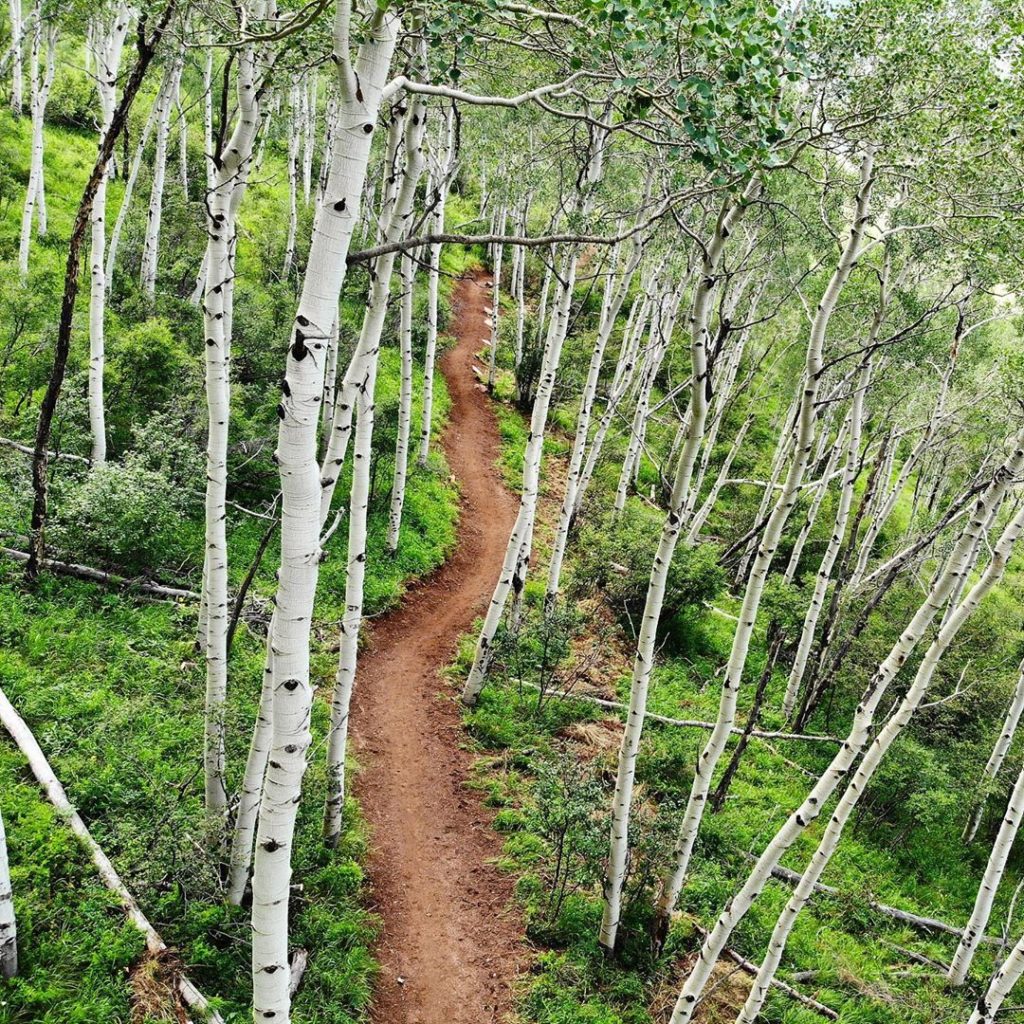Read the full article in the Vail Daily here
The word “sustainable” has become quite popular. In the trail management, maintenance, planning and building world, it has a true, real application and definition.
What is a sustainable trail? Truly it’s hard to answer that question in one sentence because it contains many aspects. However, in our minds, a sustainable trail provides a safe and fun experience for trail users while minimizing its impacts on wildlife, plants and the natural environment, today and for future generations.
That’s a lot to accomplish with a trail! For a trail or trail system to be sustainable there are four main categories that are evaluated:
Trail construction
The actual design and construction of a trail are very important to a trail’s sustainability. If the trail is built correctly in the first place then minimal ongoing maintenance is required. Design and building tactics that are evaluated include a trail’s grade, the “half rule,” the average grade of a segment, maximum grade, grade reversals, outslope, and more. All of these require significant planning, fieldwork, and measurements.
For example, many of the “trails” in our valley were originally created decades ago for agricultural, mining, timber, or farming purposes. These trails were not built sustainably then and could not have anticipated the current recreational use on them today. One of these old “trails” is Cougar Ridge. It was originally built as a road, exceeded maximum sustainable grades, continued to erode, and was not sustainable in supporting the thousands of users it sees every year. Recently, we have rerouted portions of the trail to meet sustainable trail guidelines which improved the user experience and mitigated the negative environmental impacts it was causing.
Environmental
Environmental sustainability looks at the landscape and surrounding ecosystem as a whole. The goal is to ensure that the trail is in the right place and it does not impact the natural environment or cultural resources. These include riparian areas, wildlife habitat, archaeological sites, plants and watersheds. All new trails and major trail reroutes go through an environmental review to understand what impacts it may have.
Last year, in partnership with the Forest Service, we rerouted the Mill Creek trail. If you know the Mill Creek trail as it was, you know it was more of a road than a trail. The old road was widening, eroding, and significant soils were running into the Mill Creek watershed. While evaluating a reroute, it was identified to move the trail uphill and farther away from the creek to reduce the impacts on the watershed. Additionally, during the environmental review process, it was also determined that the trail should have a seasonal wildlife closure put in place to protect elk and deer during the spring. The end result is a new rerouted trail that significantly reduces its impact on the native cutthroat in Mill Creek, provides an improved user experience, and supports wildlife.
Resources
Trails and trail systems require resources to ensure long-term sustainability. People, funding and community support are necessary to maintain trails and our trail system. Many trail users have no idea how much time, planning and resources go into trail planning, design, building and maintenance. The people taking care of the trails are often referred to as “trail fairys” because even though you don’t often see them out there, believe us, people in our community are out on our trails daily, caring for them.
We are fortunate to have such a strong community of trail stewards here in Eagle County. Through our programs every year 1,500 volunteers contribute over 4,000 hours to maintaining our trails and educating trail users on responsible recreation. This is a volunteer dollar value equivalent to over $120,000. In addition, our Trail Conservation Crew, a seasonal full-time trail crew of eight requires more than $175,000 in funding annually. And how much does a new trail or reroute cost to build, you ask? Yeah, that comes in at about $9 per linear foot or about $46,000. The trails we know, love and use have some serious costs associated with them.
Social
Does the trail provide the experience that the user desires? Is it a neighborhood dog-walking trail? Or does the user desire an experience of being in a pristine wilderness? These are all questions when evaluating the social side of trail sustainability. A mountain biking, directional-only trail would be designed completely differently than a multi-use trail for hikers, bikers and equestrian users. Safety, mitigating user conflict, trail activity, setting, and outcomes are all factors to consider.
With the continued growth of trail-based recreation, it gets harder and harder to achieve social sustainability. Most trails are not “one size fits all” and multiple types of users (hikers, bikers, trail runners, equestrian, e-bikes, etc.) all desire different types of trail experiences and access. We are constantly working toward diversifying our local trail opportunities to be more equitable, accessible and inclusive for our entire community. Ultimately, if user demands and experiences are not met, trails will be user created and more than likely in the wrong places and used during the wrong times.
Sustainable trails and trail systems provide a place for our community to get outside, connect with nature, have some fun, and improve our physical and mental health. At the same time, they also help protect the environment by ensuring that negative impacts are mitigated. In the end, sustainable trails allow our community to enjoy our trails today and for generations to come.


